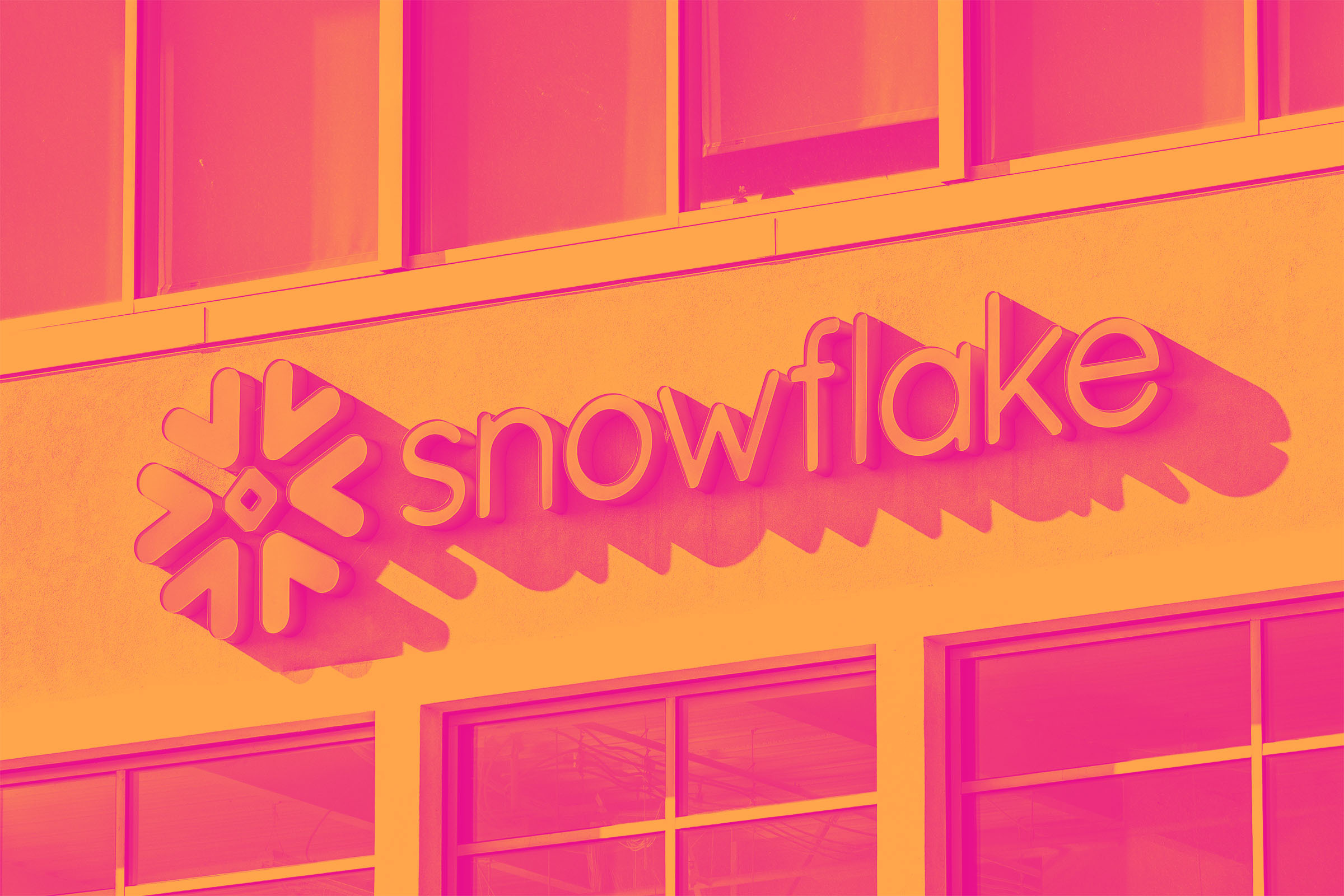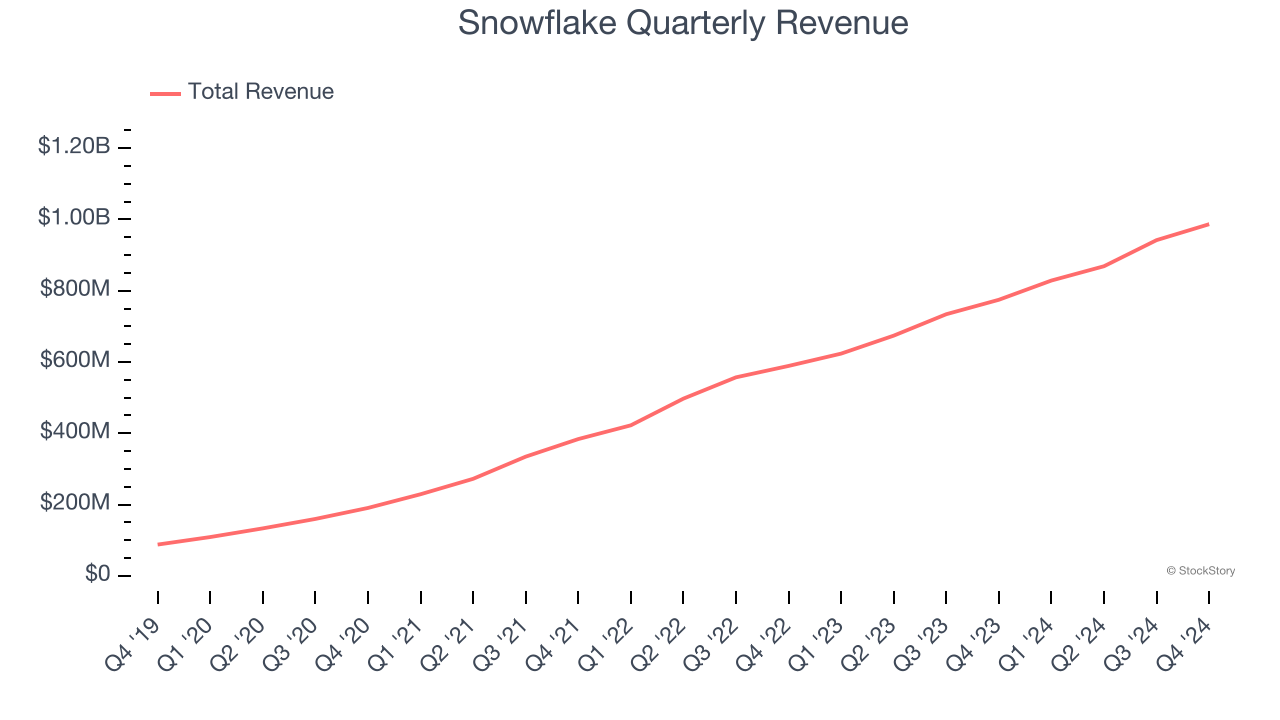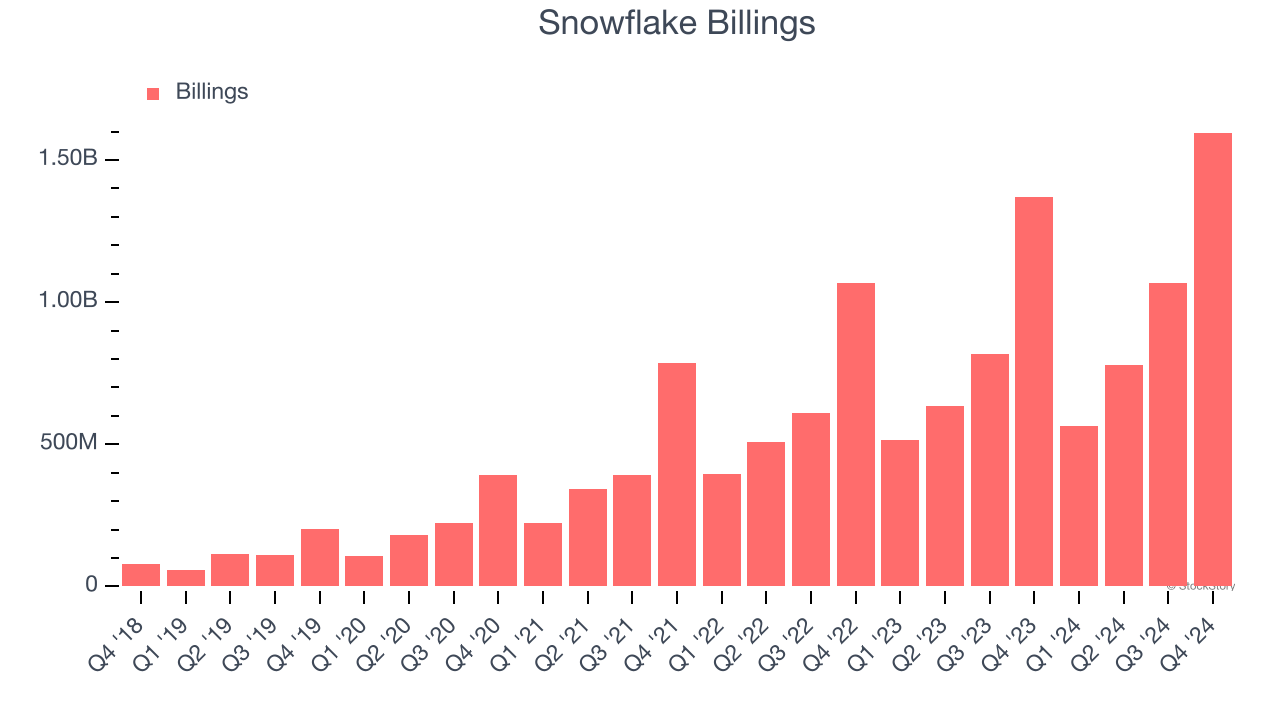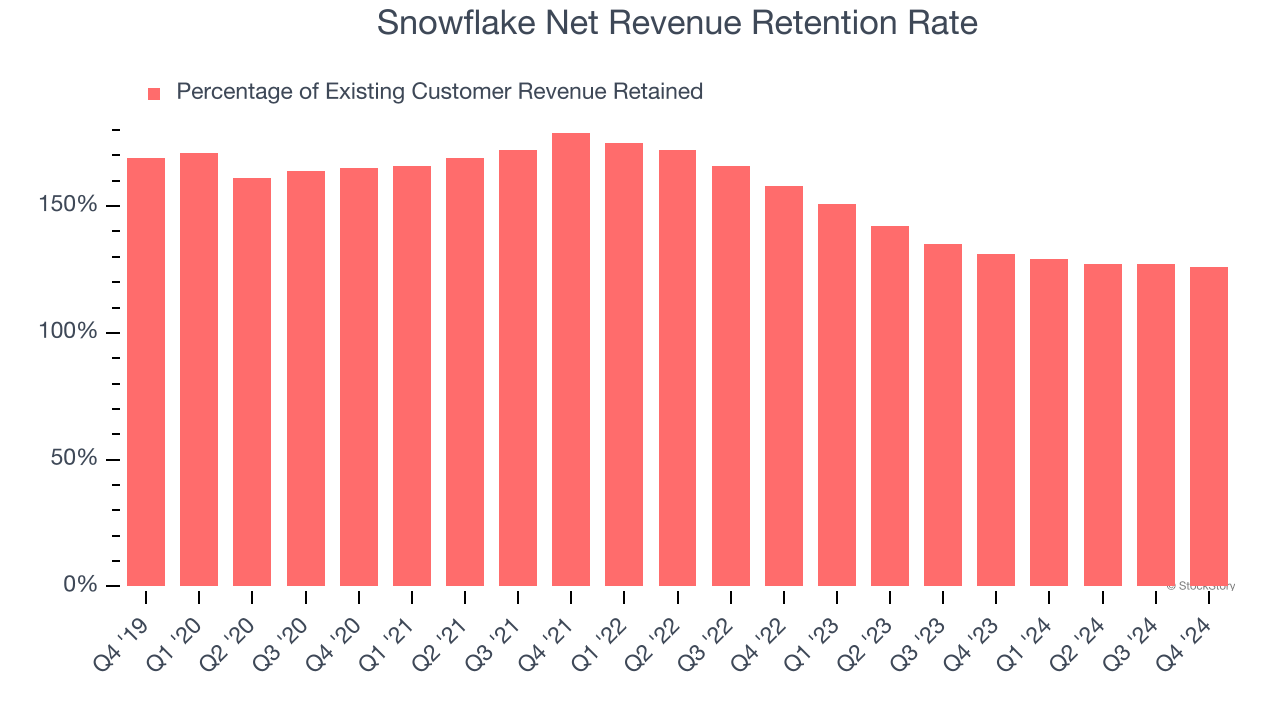
Data warehouse-as-a-service Snowflake (NYSE: SNOW) reported revenue ahead of Wall Street’s expectations in Q4 CY2024, with sales up 27.4% year on year to $986.8 million. Its non-GAAP profit of $0.30 per share was 67.3% above analysts’ consensus estimates.
Is now the time to buy Snowflake? Find out by accessing our full research report, it’s free.
Snowflake (SNOW) Q4 CY2024 Highlights:
- Revenue: $986.8 million vs analyst estimates of $957.6 million (27.4% year-on-year growth, 3% beat)
- Adjusted EPS: $0.30 vs analyst estimates of $0.18 (67.3% beat)
- Adjusted Operating Income: $92.85 million vs analyst estimates of $41.8 million (9.4% margin, significant beat)
- Management’s product revenue guidance for the upcoming financial year 2026 is $4.28 billion at the midpoint (beat vs. expectations of $4.24 billion)
- Operating Margin: -39.2%, down from -35.6% in the same quarter last year
- Free Cash Flow Margin: 0%, down from 8.3% in the previous quarter
- Customers: 580 customers paying more than $1 million annually
- Net Revenue Retention Rate: 126%, down from 127% in the previous quarter
- Billings: $1.60 billion at quarter end, up 16.5% year on year
- Market Capitalization: $54.2 billion
“We delivered another strong quarter, with product revenue of $943 million, up a strong 28% year-over-year, and remaining performance obligations totaling $6.9 billion,” said Sridhar Ramaswamy, CEO of Snowflake.
Company Overview
Founded in 2013 by three French engineers who spent decades working for Oracle, Snowflake (NYSE: SNOW) provides a data warehouse-as-a-service in the cloud that allows companies to store large amounts of data and analyze it in real time.
Data Storage
Data is the lifeblood of the internet and software in general, and the amount of data created is accelerating. As a result, the importance of storing the data in scalable and efficient formats continues to rise, especially as its diversity and associated use cases expand from analyzing simple, structured datasets to high-scale processing of unstructured data such as images, audio, and video.
Sales Growth
A company’s long-term sales performance is one signal of its overall quality. Even a bad business can shine for one or two quarters, but a top-tier one grows for years. Over the last three years, Snowflake grew its sales at an incredible 43.8% compounded annual growth rate. Its growth beat the average software company and shows its offerings resonate with customers, a helpful starting point for our analysis.

This quarter, Snowflake reported robust year-on-year revenue growth of 27.4%, and its $986.8 million of revenue topped Wall Street estimates by 3%.
Looking ahead, sell-side analysts expect revenue to grow 22.3% over the next 12 months, a deceleration versus the last three years. Despite the slowdown, this projection is admirable and suggests the market is forecasting success for its products and services.
Today’s young investors won’t have read the timeless lessons in Gorilla Game: Picking Winners In High Technology because it was written more than 20 years ago when Microsoft and Apple were first establishing their supremacy. But if we apply the same principles, then enterprise software stocks leveraging their own generative AI capabilities may well be the Gorillas of the future. So, in that spirit, we are excited to present our Special Free Report on a profitable, fast-growing enterprise software stock that is already riding the automation wave and looking to catch the generative AI next.
Billings
Billings is a non-GAAP metric that is often called “cash revenue” because it shows how much money the company has collected from customers in a certain period. This is different from revenue, which must be recognized in pieces over the length of a contract.
Snowflake’s billings punched in at $1.60 billion in Q4, and over the last four quarters, its growth was impressive as it averaged 20.1% year-on-year increases. This alternate topline metric grew slower than total sales, meaning the company recognizes revenue faster than it collects cash - a headwind for its liquidity that could also signal a slowdown in future revenue growth. 
Customer Retention
One of the best parts about the software-as-a-service business model (and a reason why they trade at high valuation multiples) is that customers typically spend more on a company’s products and services over time.
Snowflake’s net revenue retention rate, a key performance metric measuring how much money existing customers from a year ago are spending today, was 127% in Q4. This means Snowflake would’ve grown its revenue by 27.2% even if it didn’t win any new customers over the last 12 months.

Despite falling over the last year, Snowflake still has an excellent net retention rate. This data point proves that the company sells useful products, and we can see that its customers are satisfied and increasing usage over time.
Key Takeaways from Snowflake’s Q4 Results
It was encouraging to see Snowflake beat analysts’ revenue expectations this quarter. Operating profit beat by a convincing amount, showing strong operating leverage. Looking ahead, full-year product revenue guidance exceeded Wall Street's expectations. Overall, there was a lot to like about the quarter. The stock traded up 9% to $181.10 immediately after reporting.
So do we think Snowflake is an attractive buy at the current price? The latest quarter does matter, but not nearly as much as longer-term fundamentals and valuation, when deciding if the stock is a buy. We cover that in our actionable full research report which you can read here, it’s free.





